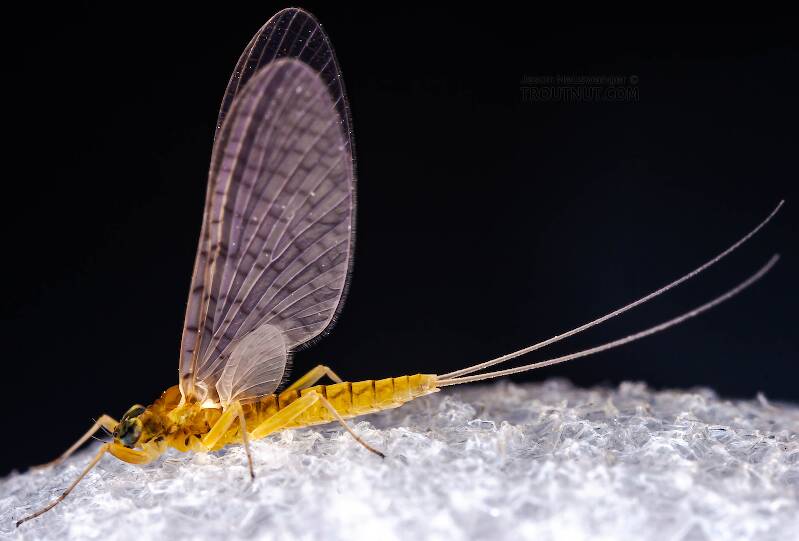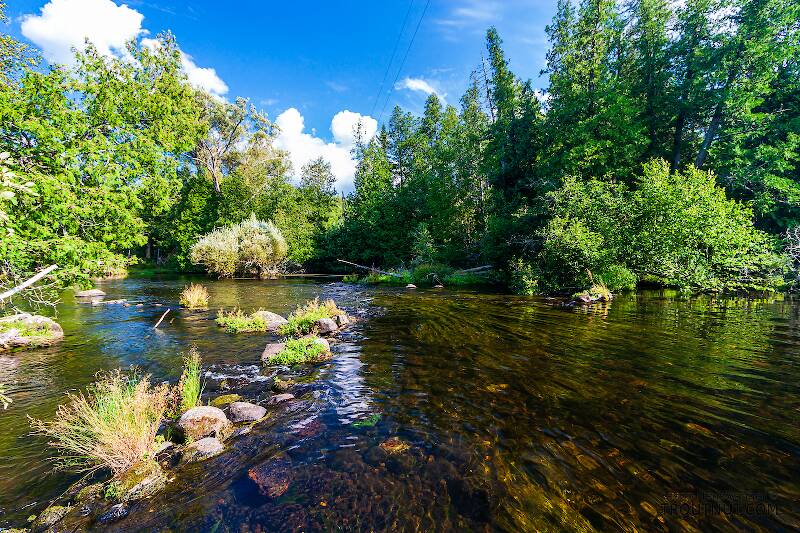
Hex Mayflies
Hexagenia limbata
The famous nocturnal Hex hatch of the Midwest (and a few other lucky locations) stirs to the surface mythically large brown trout that only touch streamers for the rest of the year.
Featured on the forum

Nymphs of this species were fairly common in late-winter kick net samples from the upper Yakima River. Although I could not find a key to species of Zapada nymphs, a revision of the Nemouridae family by Baumann (1975) includes the following helpful sentence: "2 cervical gills on each side of midline, 1 arising inside and 1 outside of lateral cervical sclerites, usually single and elongate, sometimes constricted but with 3 or 4 branches arising beyond gill base in Zapada cinctipes." This specimen clearly has the branches and is within the range of that species.

Troutnut is a project started in 2003 by salmonid ecologist Jason "Troutnut" Neuswanger to help anglers and
fly tyers unabashedly embrace the entomological side of the sport. Learn more about Troutnut or
support the project for an enhanced experience here.

I found this dun on the same piece of stream as a similar spinner, probably of the same species.
GONZO on Oct 6, 2006October 6th, 2006, 6:39 am EDT
Haven't checked any keys to verify, but most of the little late-season Cahill-looking duns are Leucrocuta. If I had to guess at the species, I'd say hebe (Little Yellow Quill). It is probably the most common L. spp. in the East and has a long hatching period that extends well into the fall.
I would also agree that the spinner you photographed is the same species.
I would also agree that the spinner you photographed is the same species.

